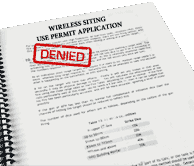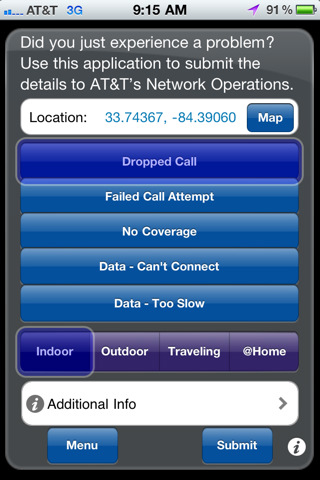 US District Judge Richard Kopf has, again, set out the minimum ‘in writing’ and ‘substantial evidence’ standards for a Nebraska local government intending to deny a wireless site application.
US District Judge Richard Kopf has, again, set out the minimum ‘in writing’ and ‘substantial evidence’ standards for a Nebraska local government intending to deny a wireless site application.
On December 23, 2010, Judge Kopf granted a motion for summary judgment sought by Viaero Wireless to require the Village of Doniphan, Nebraska to issue the required permits to permit Viaero to construct a new wireless site within the Village.
Viaero argued that the Doniphan Board of Trustees’ denial of its CUP application violated § 332(c)(7)(B)(iii) of the TCA because the Board’s decision was not in writing or supported by substantial evidence contained in a written record. Judge Kopf agreed.
In his decision, Judge Kopf cited the facts from the record:
During its regular monthly meeting on February 8, 2010, the Doniphan Board of Trustees considered and held a public hearing to receive public comment on Viaero’s CUP application. A Viaero representative attended the meeting and made a Power Point presentation to the Board in support of Viaero’s CUP application. The representative also answered questions posed to him from both the Board and various citizens attending the meeting. No motion was made to approve the application and no action was taken to approve or deny the application at that meeting. With respect to the CUP application, the February 8, 2010 meeting minutes only state:
The Public Hearing to receive public comment on a conditional use permit application from Viaero Wireless to construct a wireless communication tower in the 200/300 block of North First Street opened at 8:00 p.m. Chris Riha, Site Acquisition Manager with Viaero Wireless gave a power point presentation detailing plans for the tower, and its location. He also addressed common concerns with this type of structure and answered questions. There were several residents and property owners of the Village who were present for the discussion. The 80 foot self supporting lattice tower would be located to the north and east of White Farms Trucking and is needed in order to improve cell phone coverage for customers in the Doniphan area. The tower would be surrounded by a chain link fence housing a back up generator, a buried 1,000 gallon propane tank and an aggregate building to store the electronic equipment. The Board heard numerous concerns and comments from members of the public in opposition to the tower’s location, which is near a residential district. The overall feeling from the public was that the tower needed to be moved away from the housing area to a more suitable location. After a lengthy discussion the Public Hearing closed at 9:36 p.m. Chairman Treat then called for a motion to approve the Conditional Use Permit application from Viaero Wireless to construct a wireless communication tower in the 200/300 block of North First Street. No such motion was made, therefore no action was taken by the Board and the Conditional Use Permit was not approved.
Viaero’s CUP application was again considered by the Doniphan Board of Trustees at a meeting held on March 8, 2010. No additional testimony on Viaero’s application was taken by the Board at that meeting. However, one of the trustees made a motion to deny the application. That motion was seconded and passed unanimously. There was no discussion by the Board of any reason for denying the application. The Board’s minutes for its March 8, 2010 meeting say only, “[a] motion was then made by Jenkins, seconded by Haile to deny the Conditional Use Permit Application from Viaero Wireless. Motion carried unanimously.”
(Internal citations omitted)
Judge Kopf explained:
The TCA requires that “[a]ny decision by a State or local government or instrumentality thereof to deny a request to place, construct, or modify personal wireless service facilities shall be in writing and supported by substantial evidence contained in a written record.” 47 U.S.C. § 332(c)(7)(B)(iii) (emphasis added). In USOC of Greater Iowa, Inc. v. City of Bellevue, Nebraska, 279 F. Supp.2d 1080, 1084-85 (2003), a case with facts similar to those presented here, I concluded that in order for a decision by a local government denying a request to place, construct or modify personal wireless facilities to be “in writing” for purposes of this section of the TCA, it must: “(1) be separate from the written record; (2) describe the reasons for the denial; and (3) contain a sufficient explanation of the reasons for the denial to allow a reviewing court to evaluate the evidence in the record that supports those reasons.” Id. at 1084-85 (2003) (quoting New Par v. City of Saginaw, 301 F.3d 390, 395-96 (6th Cir. 2002)). The Doniphan Board of Trustees’ decision denying Viaero’s CUP application is insufficient under this standard.
The decision to deny Viaero’s application is only noted in the minutes of the March 8, 2010 Board meeting. As was the case in USOC of Greater Iowa, these meeting minutes merely reflect that the application was unanimously denied. The minutes do not contain stated reasons for the denial or an explanation of how the decision was reached. [The Village] argues that the combination of the meeting minutes from the March 8, 2010 meeting and the February 8, 2010 meeting satisfy the “in writing” requirement. The court disagrees. While the February 8, 2010 minutes give some general indication as to what evidence was presented at the hearing, there is no explanation as to why the Board ultimately denied the application.
Defendant urges the court to reconsider its decision in USOC of Greater Iowa and find that any decision that is “in writing,” including a decision reflected in written meeting minutes, should be held to satisfy the “in writing” requirement contemplated by the TCA. The court declines to do so. As I concluded in USOC of Greater Iowa, “permitting local boards to issue written denials that give no reasons for a decision would frustrate meaningful judicial review, even where the written record may offer some guidance as to the board’s rationale.” USOC of Greater Iowa, 279 F. Supp.2d at 1084 (quoting Southwestern Bell Mobile Sys., Inc. v. Todd, 244 F.3d 51, 60 (1st Cir. 2001)). This reasoning remains sound. Without a decision adequately explaining the reasons for the denial, it is difficult, if not impossible, for a reviewing court to evaluate the evidence in the record supporting the reasons for the denial.
Further, even assuming that the “in writing” requirement was satisfied, the Board’s decision would nevertheless violate the TCA because it is not “supported by substantial evidence contained in a written record.” 47 U.S.C. § 332(c)(7)(B)(iii.) “Substantial evidence is such relevant evidence as a reasonable mind might accept as adequate to support a conclusion.” USOC of Greater Iowa, 279 F. Supp.2d at 1085 (quoting Mississippi Transp. Inc. v. NLRB, 33 F.3d 972, 977 (8th Cir. 1994)).
Further, even assuming that the “in writing” requirement was satisfied, the Board’s decision would nevertheless violate the TCA because it is not “supported by substantial evidence contained in a written record.” 47 U.S.C. § 332(c)(7)(B)(iii.)
“Substantial evidence is such relevant evidence as a reasonable mind might accept as adequate to support a conclusion.” USOC of Greater Iowa, 279 F. Supp.2d at 1085 (quoting Mississippi Transp. Inc. v. NLRB, 33 F.3d 972, 977 (8th Cir. 1994)).
Under the substantial evidence standard we cannot substitute our determination for that of the administrative fact-finder just because we believe that the fact-finder is clearly wrong. If the Board’s findings are supported by some substantial level of evidence (but less than a preponderance) on the record as a whole (contrary evidence may not simply be ignored on review) so that a reasonable fact-finder could reach the same conclusion as did the Board, the Board’s decision must be affirmed. We will not reject the Board’s decision as unsupported by substantial evidence because there exists the possibility of drawing two inconsistent conclusions for the evidence.
Sprint Spectrum, L.P. v. Platte County, Missouri, 578 F.3d 727, 733 (8th Cir. 2009) (quoting USCOC of Greater Iowa v. Zoning Bd. Of Adjustment, 465 F.3d 817, 821 (8th Cir. 2006) ).
Defendant contends that substantial evidence supporting Defendant’s decision is contained in the minutes from the Board meeting held on February 8, 2010. In particular, Defendant points to the minutes’ reference to numerous public concerns and comments in opposition to the tower’s proposed location, which is near a residential district. With respect to these “public concerns,” the meeting minutes only state that “[t]he overall feeling from the public was that the tower needed to be moved away from the housing area to a more suitable location.” (Filing 24-3 at CM/ECF p.2. ) While public concerns can, in some instances, serve as substantial evidence, layperson residents’ generalized comments about aesthetics and property values are insufficient and, from the record presented here, there is no way of determining what the precise citizen concerns were. See USOC of Greater Iowa, 279 F. Supp.2d at 1086 (finding that generalized property value concerns by laypersons are insubstantial); Cellular Tel. Co. v. Town of Oyster Bay, 166 F.3d 490, 496 (2d Cir.1999) (finding that “generalized expressions of concern with ‘aesthetics’ cannot serve as substantial evidence” for denying a permit); Omnipoint Corp. v. Zoning Hearing Bd., 181 F.3d 403, 409 (3d Cir. 1999) (concluding that generalized concerns about property values and visual impact does not constitute substantial evidence). Moreover, there is no evidence that Viaero’s CUP application was denied based on the public comments referenced in the meeting minutes. There simply is no substantial evidence in a written record to support the Board’s decision.
Substantial evidence in the record, and written decisions based on the substantial evidence… The formalities count, and Judge Kopf has confirmed that once again.
Case No. 4:10-cv-03059
viaero.wireless.complaint
viaero.wireless.answer
viaero.wireless.decision
viaero.wireless.order





![]() ave to divest portions of its existing wireless network to secure federal permissions to acquire T-Mobile. Stephenson’s comments were made in New York at a Council on Foreign Relations event held on March 30, 2011
ave to divest portions of its existing wireless network to secure federal permissions to acquire T-Mobile. Stephenson’s comments were made in New York at a Council on Foreign Relations event held on March 30, 2011



 March 3, 2011: 2 hour live teleconference
March 3, 2011: 2 hour live teleconference